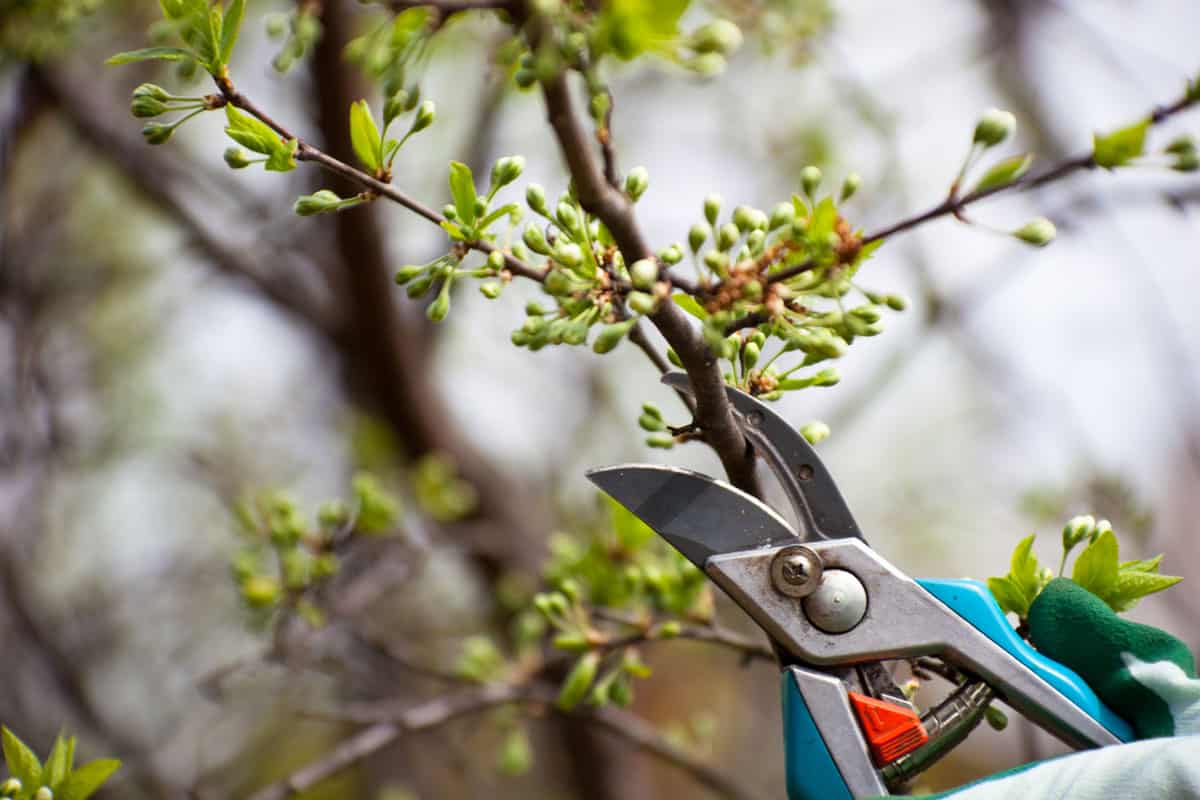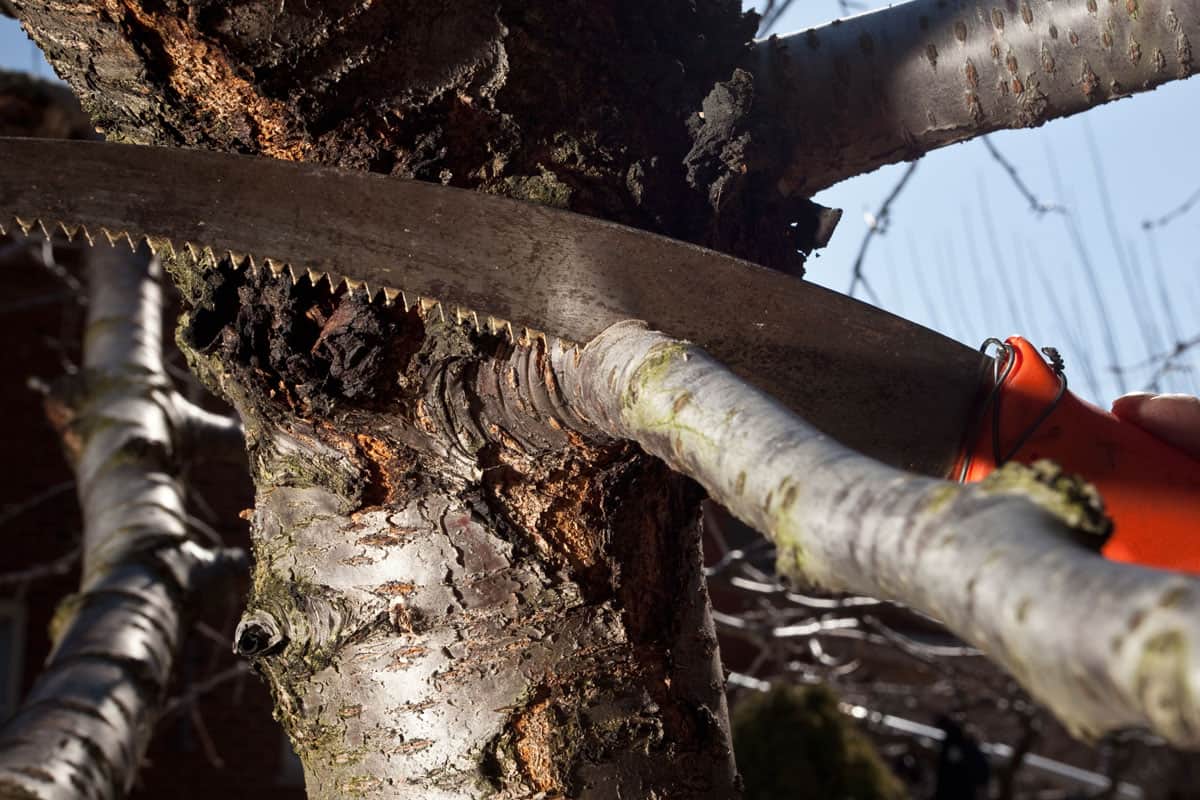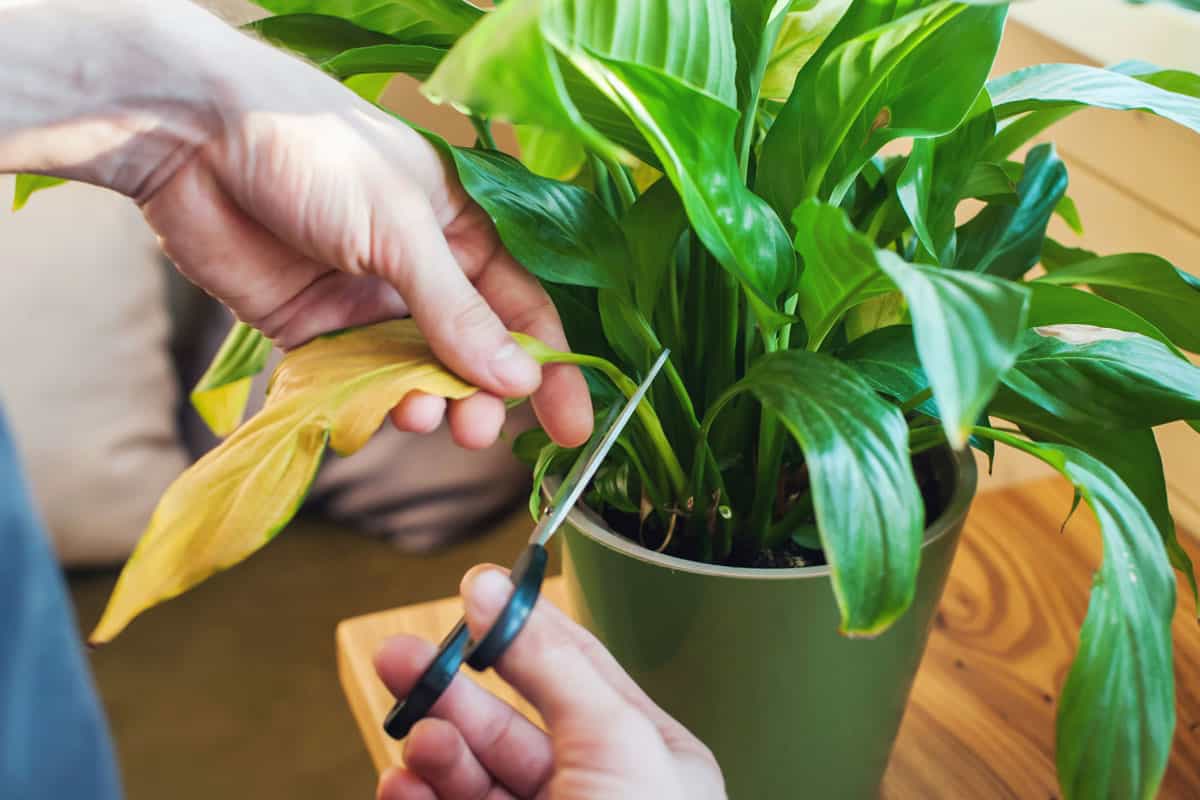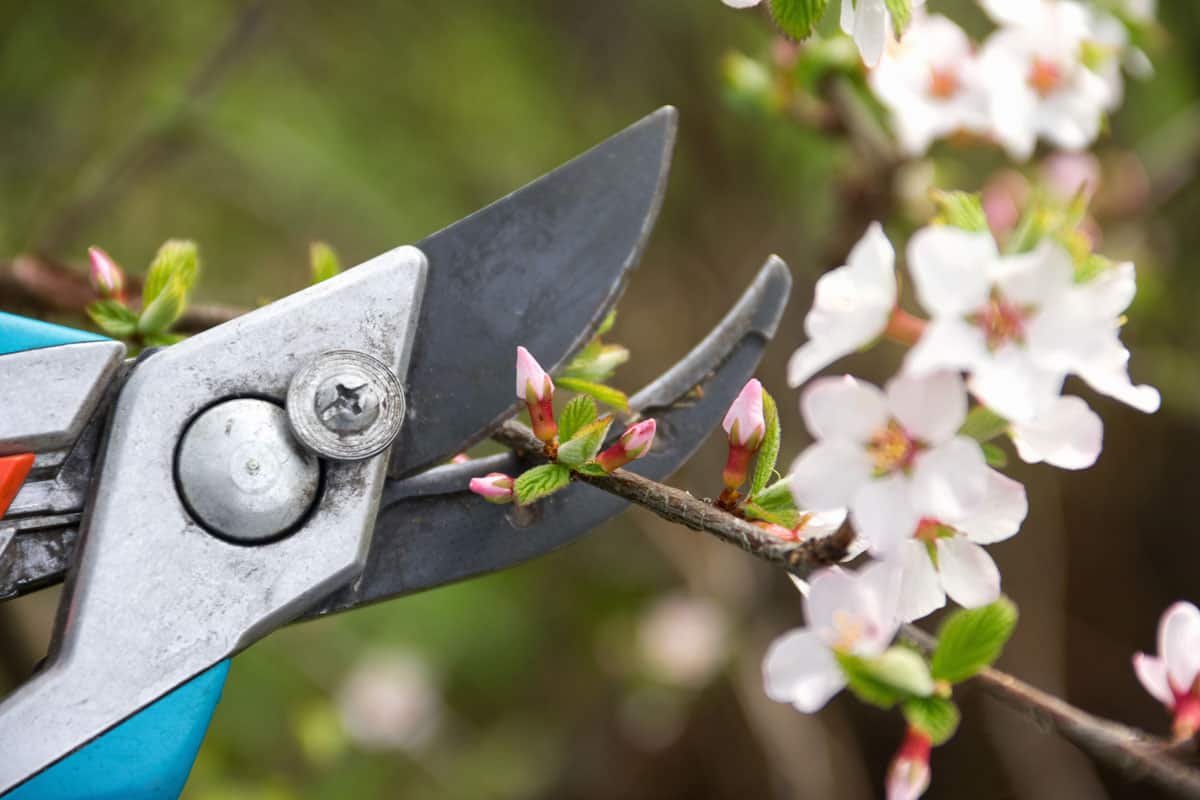Pruning is a necessary task to keep plants healthy, give them shape, and can promote thicker growth. For new gardeners, this can feel like an overwhelming job. It's natural to feel confused about where to make cuts or be concerned about over-pruning. If you're one of these people, you're in the right place. We've done the research and can tell you more about where you should make your pruning cuts.
You should make cuts at an angle just above the node on the branch that you're cutting. Prune any weak, dead, damaged, or unsightly branches before you make any cuts for aesthetics.
For shrubs, remove branches individually back to the main stem or just above where an offshoot is.
You should cut side branches on trees back to the main trunk. If the branch is thicker than one inch, use a pruning saw to make three cuts.
- The first should only go one-third of the way through and should be about a foot away from the trunk.
- The second should be 3 inches from the first cut and closer to the end of the branch.
- The final cut should be made close to the main trunk.
Long vines or leaves on house plants should be cut slightly above a node on the vine. You can also cut back to the main stem.
![Gardening pruning a flower shrub plant on the garden, Where Do You Cut When Pruning A Plant [& At What Angle]?](https://gardentabs.com/wp-content/uploads/2022/10/Where-Do-You-Cut-When-Pruning-A-Plant-At-What-Angle.jpg)
The more you prune your plants, the more comfortable you'll get with doing it. Keep reading to learn where you should cut when pruning, the best time of year to do so, and more!
What Branches To Prune
Before making any cuts, it's essential to make a plan first. A carefully thought out pruning plan can ensure you remove the right branches and prevent you from over-cutting. Several types of branches should be pruned before making any cuts to shape the plant.
Branches that are damaged, diseased, or broken should always be removed. You should also remove branches that are growing down or across each other. If branches chafe, there will be more areas for insects to enter your plant.
Where to Prune Shrubs

You should prune shrub branches back to the main stem. For larger branches, you'll cut them back to where an offshoot is.
Make your cuts approximately half an inch above the node. Make sure to keep your cuts sloping downwards. By doing this, you're protecting the cut and helping to prevent diseases.
Removing branches individually is the best way to maintain the shrub's natural shape. You may also want to keep the bottom portion slightly wider than the top. Shrubs with thinner tops allow more light to reach the lower branches.
Another thing to consider is how much to prune. Experts don't recommend removing more than one-third to one-quarter of a plant at once.
Want more specific advice on pruning shrubs? Check out this post, "California Lilac: How And When To Prune, Plant, and Transplant?"
Where To Prune Trees

Most trees rarely need pruning. However, occasionally, you will need to remove damaged, diseased, or dead growth. You can also use pruning to help control a tree's size, shape, and fruit or flower production.
You can use pruning shears to remove smaller branches. Cut these areas back to the larger branch. You need to make sure that you leave some space when cutting. If you make flush cuts, it can make healing more difficult for the tree.
Any branch longer than an inch thick will need to be cut using a pruning saw. It's also best to make multiple cuts as opposed to one.
The first cut you make should only go partially through the branch. You should also make this cut from the bottom of the branch and approximately 6 inches from the trunk.
Your second cut will be 3 inches away from the first and closer to the end of the branch. The third cut needs to be close to the branch collar.
Remember to make the final cut at an angle with the cut facing down. You should also avoid making too steep of an angle. Unfortunately, this can interfere with the tree's healing and cause it to break easier in the future.
Tree Pruning Mistakes
You shouldn't over-prune your trees. In the past, tree topping was a popular act that involved cutting branches back regardless of whether they needed it or not. People believed that this amount of pruning caused the tree to grow back bigger. Unfortunately, the new growth is also unsightly and more prone to breakage.
It's also important to make three cuts for larger branches. A single cut can cause the bark to tear. Torn bark is a perfect place for insects to enter the tree and cause damage.
You should also avoid using any sort of pruning paint for trees. Pruning paint was once believed to prevent wood decay and protect the tree from damage. However, experts now agree applying this paint can interfere with the tree's ability to heal itself.
You'll only need pruning paint if you have an oak tree. All oak tree wounds should be immediately treated to prevent fungal spores from sticking to the sap.
Concerned about pruning your fruit tree? Check out this post, "Can You Kill A Fruit Tree By Over Pruning?"
Where To Prune House Plants?

House plants are relatively easy to prune. For these plants, you can cut vines or leaves back to a node on the vine being cut. Otherwise, you can cut all the way back to the main stem.
When pruning house plants, it's important not to cut away more than 25% of your plant. If you cut too much away, the plant can starve because it isn't producing enough to feed itself.
Why You Need To Prune At An Angle
When pruning, cutting at an angle instead of straight up and down is essential. Typically, you should cut at a 45-degree angle and keep the open cut side facing down. This is the same with all plants and trees that you're pruning.
Cutting at an angle protects the open wound on the plant and promotes faster healing. If you make cuts with the opening on top, you leave a spot open for water to gather. Unfortunately, this can allow bugs and diseases to enter your plant easily.
What Do You Use To Prune Plants?
You can prune house plants and dying leaves with a pair of sharp scissors. Shrubs and thin branches should be cut with pruning shears or loppers. For larger branches, your best option is the pruning saw.
It's important to keep any tool that you're using clean from rust and sharp. Taking good care of your tools will help your plants heal faster and make the job easier for you.
Check out these pruning shears on Amazon!
Take a look at this pruning saw on Amazon!
When Should You Prune Plants?
Pruning can happen for most of the spring and into summer, depending on the type of plants you have in your yard. Flowering and fruit-bearing trees and shrubs benefit from early spring or late winter pruning.
Other plants that should be pruned in early spring are evergreen shrubs, pines, and spruces.
You should prune shrubs that flower in spring on old growth after the blooming season has finished. Don't dawdle on this task. If you take too long, you may remove a branch that would have supported new life.
House plants can be lightly pruned throughout the year. However, more extreme pruning should be saved for the beginning of spring. Both outdoor and indoor plants greatly benefit from the increased light during this time.
In Conclusion

Pruning is a necessary task that all gardeners will need to get used to if they want healthy plants. Always remember to plan out your cuts beforehand to avoid making mistakes.
Additionally, you should always cut at a downwards-sloping angle to help the plant heal more quickly.


